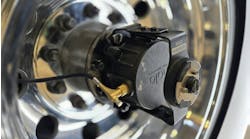Today, advances in virtually every industry center around the use of Big Data, the Internet of Things (IoT) or machine learning (ML). It’s easy to dismiss these as buzzwords or concepts that only apply to digital worlds, like e-commerce or finance. But the reality is, they infiltrate the physical world as well, and any business running high-capital assets – including transportation – needs to take notice.
Predictive maintenance, which sits at the heart of Big Data, IoT and ML, is widely considered to be the obvious next step in not only the transportation industry, but also in manufacturing, energy, oil and gas, construction, agriculture, food retail and more. As increasingly more enterprises start to embrace predictive maintenance, they continue to see large wins, expanding their programs to gain significant advantages over competitors.
Before getting into the potential results, let’s discuss what exactly predictive maintenance is and what it means to implement a predictive maintenance program.
Retroactive analysis to real-time prediction
The concept of continuous monitoring technologies with IoT-connected devices isn’t exactly new. Many players in the transportation industry already monitor the output of various devices, a sort of dashboard, high-level view of performance, or maybe they do retroactive analysis on the data.
In its simplest form, predictive maintenance goes a step beyond traditional data analysis, taking batch data and applying algorithms to predict likely equipment failures based on that data. More complex predictive maintenance systems also delve into real-time optimization, determining the right combination of operating factors to reduce wear and increase efficiency, like, for example, optimal speed based on conditions for better fuel use.
These real-time predictions often allow for the detection of impending failures that could never be detected by human eyes or optimization nuances that could never be inferred by a person operating a vehicle or vessel. With predictive maintenance, downtime and repairs are usually directly tied to likely failure, minimizing cost – less downtime, less labor time, less chance of unexpected failure – and maximizing asset life.
It’s clear here how traditional maintenance techniques – run-to-failure, preventive or some combination of the two – inevitably mean unexpected repair, which leads to longer downtime on top of unnecessary downtime due to regular inspection. Depending on the size of the fleet and type of assets, traditional maintenance – despite its good intentions – can cost businesses hundreds of thousands or millions of dollars in downtime and catastrophic failures over time.
Of course, in reality, it’s not really a question of traditional versus or against predictive maintenance. Even with a primarily predictive strategy, traditional inspections will still be performed – especially after a major event or specific weather conditions, for example. But now, they may be focused on specific areas, functions or parts that may otherwise have been overlooked, thus saving time and money and improving effectiveness.
In general, the move toward predictive maintenance - even partially - has proven associated cost savings.
A closer look
What sets predictive maintenance apart is that it makes predictions based on multiple, varied and often intertwined data sources that could impact a fleet. It’s not just about looking at one specific data source. Predictive maintenance is effective precisely because it combines data from things like IoT sensors; external data from APIs (application programming interfaces), like the weather; static data, like manufacturer service recommendations; manual data from human inspection; geographical or terrain data; equipment usage history data; parts composition; and more.
Once all of the data are combined, predictive algorithms and machine learning can be applied to produce a model that successfully predicts failures or optimizes for any number of factors, and the models are tested to ensure an acceptable degree of accuracy that minimizes false negatives and false positives.
With predictive maintenance, it’s important to consider the costs of these failures and whether it’s more optimal to over- or under-estimate the so-called remaining useful life that could lead to either catastrophic failure or unnecessary maintenance, respectively.
Most importantly, once developed, all of these things – combining data sources and applying machine learning for predictions – can happen in real time as assets are in use.
Comprehensive predictive maintenance strategy
But predictive maintenance isn’t simply about producing predictive outputs in raw format. After all, transportation companies have large staffs dedicated to maintenance, not all of which are data scientists or analysts able to interpret outputs of a machine learning model.
Instead, to get the most out of predictive maintenance, organizations must really rethink and optimize their entire strategy from top to bottom, integrating the predictive component seamlessly into all parts of the business. Collaboration is key here and it is vital to include business small-to-medium enterprises (operational and maintenance), business analysts, engineers, data scientists and application developers in the mix.
At a bare minimum, any outputs from a predictive maintenance program must be human-readable. Generally, this is most effective in the form of dashboards and visualizations, which easily close the feedback loop and allow maintenance managers, operators or staff to react to any impending failures or optimization techniques.
The output must be relevant, timely, and actionable.
More realistically, for maximum return, predictive maintenance must be an entire system around which the company’s efforts revolve, not just a simple dashboard (although this is certainly a good first step).
A comprehensive predictive maintenance system means:
1. Conducting initial analysis to determine if a predictive maintenance strategy makes sense for all assets or only a portion of them based on cost analysis, and from there, optimal combination of predictive versus preventive maintenance per asset or asset type.
2. Extending predictive maintenance upstream. In other words, not just determining when a part will fail or when to fix something before it breaks, but also looking at optimizing for convenient service locations and anticipating need for parts in advance. Look to avoid follow-up and ensure that the most appropriate and cost-effective service team can be deployed the first time.
3. Setting larger-picture goals than simply “detect failure.” Predictive maintenance isn’t the end goal per se. Companies with truly effective predictive maintenance programs operate them at much a wider scale than just anticipating failures.
Set big-picture business goals, like reducing fuel costs, increasing uptime in general, reducing downtime due to waiting on parts, increasing revenue yield, decreasing shipment delays, etc., and then use predictive maintenance to get there.
4. After detecting failure, have a plan. Again, going beyond the actual failure detection, it’s critical to then decide how to best execute necessary repairs through second-order or secondary analytics.
Secondary analytics means having a process in place for an entire deeper layer of analysis to determine the best time to actually remove the asset from service and which additional repairs - if any - should be conducted simultaneously to minimize the cost of having to remove the asset again for a different failure within a short window.
5. Leveraging automation and moving more toward self maintenance by optimizing for, and automating, the immediate next steps once predictive systems point to imminent failure, whether this automatically triggers a work order, notifies a technician or certain team, places an order for a replacement part, etc.
Get started
Not sure where to begin? A good first step is to assemble a cross-functional team – maintenance management, data science, business analysts, IT, etc. – to prototype and lead the project. This team can start setting big picture business goals and conduct a cost/benefit analysis to determine the savings predictive maintenance might provide.
If your business already has a predictive maintenance program in place but wants to go further, start moving toward a second-order or secondary analytics program to determine the most cost-effective maintenance plan when taking assets out of service for predicted failure. Now is also the time to start identifying opportunities for further AI (artificial Intelligence) automation with the goal of getting closer to self-maintenance.
Whether just getting started or looking to advance a predictive maintenance program, remember that agility and flexibility in implementation are essential. New technologies will continue to emerge and evolve, and being able to adapt along with them will ensure your predictive maintenance program remains cutting edge.
Guidebooks and whitepapers on predictive maintenance, data science and predictive analytics can be found online at www.dataiku.com/resources/whitepapers.
Mike Bukowski is a sales principal with Dataiku (www.dataiku.com), the maker of the all-in-one data science software platform Dataiku Data Science Studio (DSS). It is a unique advanced analytics software solution that enables companies to build and deliver their own data products more efficiently. Bukowski has more than 25 years of experience working with customers leveraging predictive maintenance, advanced analytics and data science.



